Master Data
General Ledger (Maintain Chart of Account)
Watch the tutorial video here: YouTube
-
Creating a New Account
- Select GL | Maintain Account | Select category (e.g. Fixed Assets) | New
-
Enter the GL Code and Description (alphanumeric characters are acceptable).
-
Check the Special Account Type if applicable, e.g., if the account belongs to the Accumulated Depreciation Account (Fixed Assets).
- Click OK. Your new account is now created.
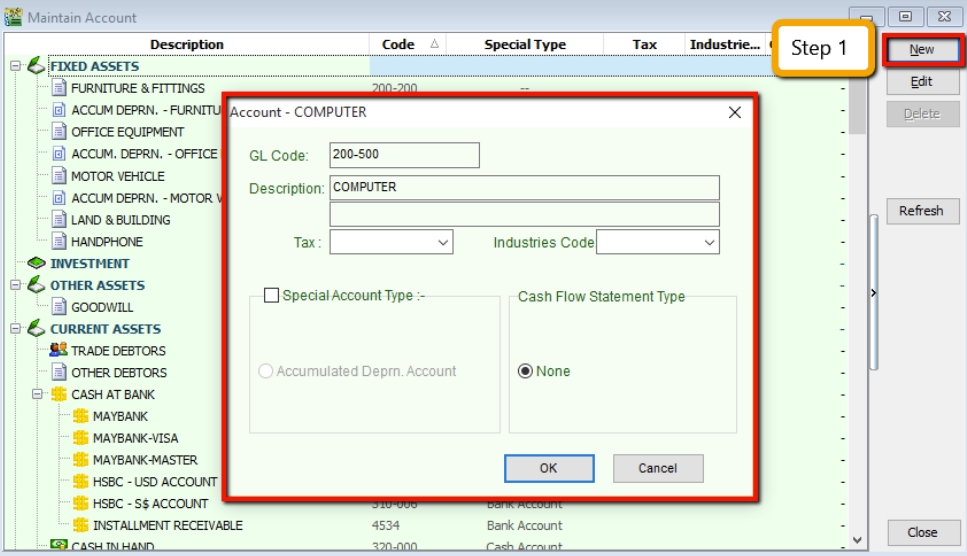

-
Creating a Sub Account
-
Point to the parent account (e.g. Cash at Bank)
-
Follow the same steps from 2.1.1 Create New Account
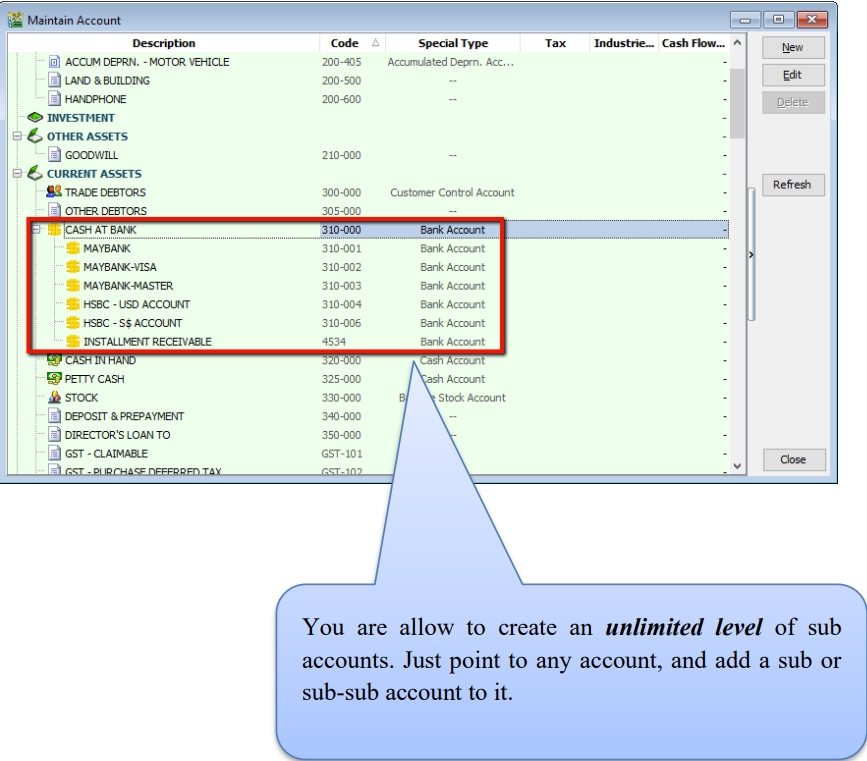
You are allowed to create an unlimited number of sub-accounts. Point to any account and add a sub- or sub-sub-account.
-
Maintain Customer
Watch the tutorial video here: YouTube
There are four main tabs under Maintain Customer. Let's create a new customer and look at each tab one by one.
Create New Customer
-
Customer | Maintain Customer | New
-
Enter the customer’s name and other information as appropriate.
General (Maintenance)
-
You can categorize your customers into different groups (e.g., category, agents, area). To create a new agent or area, refer to the steps below:

-
You can also add multiple billing and delivery addresses (unlimited).
-
There are different options for viewing customer aging and customer statements.
note- Customer Statement
-
Brought Forward: Summary Statement
-
Open Item: Detail Statement
-
- Customer Aging
- Invoice Date: based on IV Date
- Due Date: Based on after due date (terms)
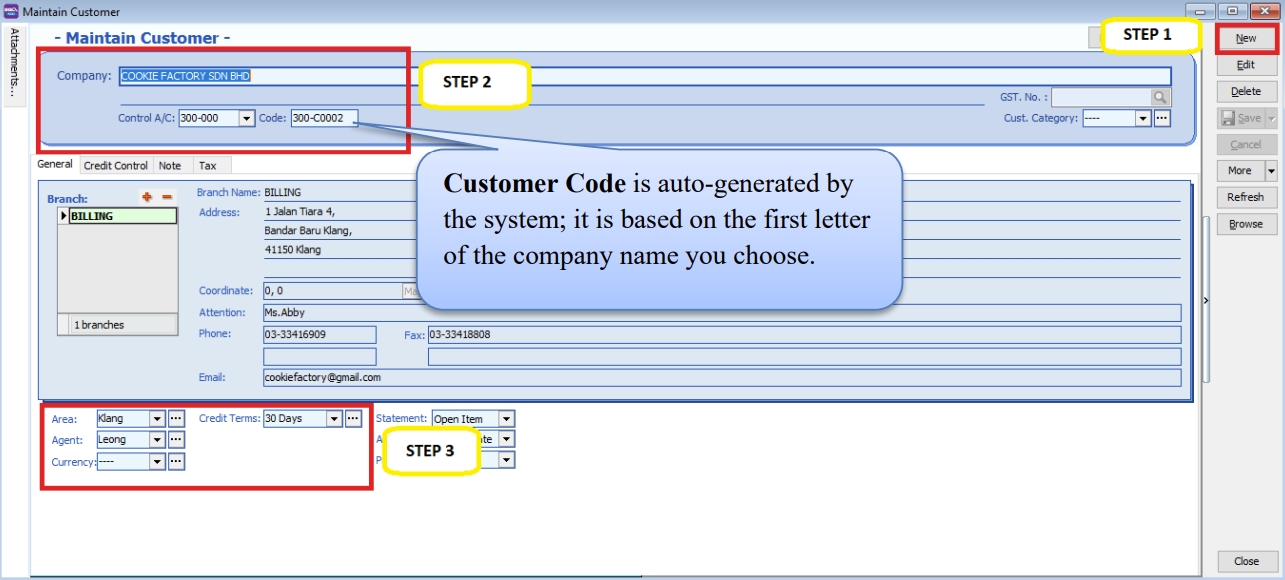
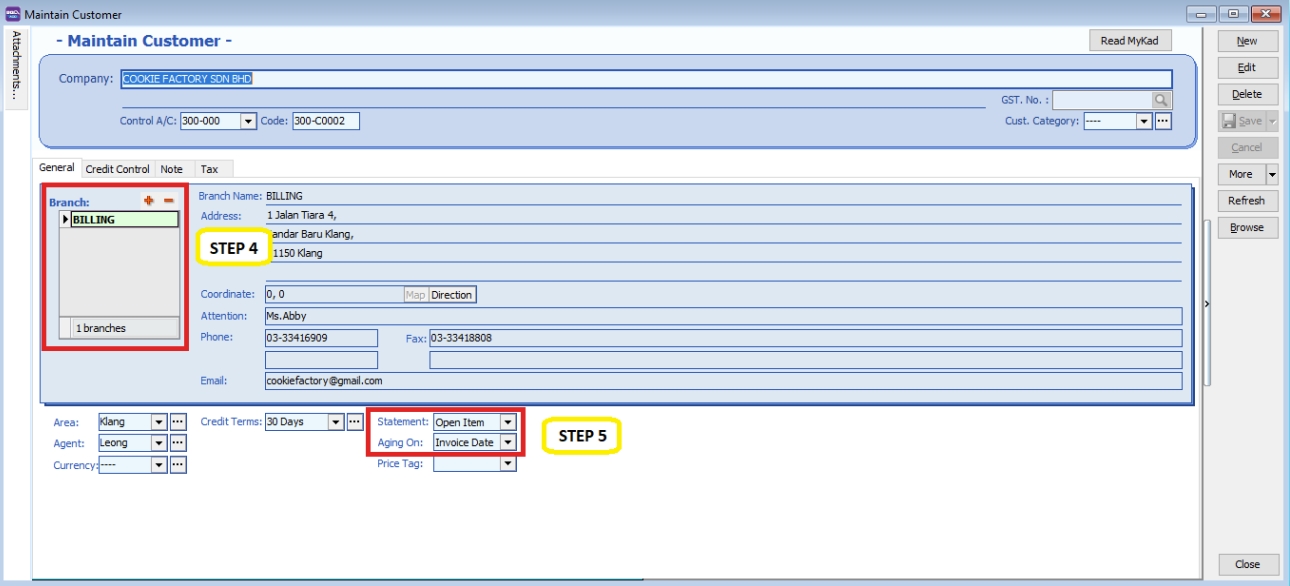
- Customer Statement
Advance Credit Control (*Pro Package Inclusive)

You can set the credit limit and overdue limit amounts, and block certain transaction entries for specific customers. This applies to the following documents: Quotation (QT), Sales Order (SO), Delivery Order (DO), Invoice (IV), Cash Sales (CS), and Debit Note (DN).
We can also set once exceed limit & overdue limit,
-
Unblock – No restrictions.
-
Block – Blocked for all users.
-
Override – Certain users with access rights can enter their username and password to override.
-
Suspended – Blocked with a suspended message.
Tax
If the customer provides a certificate exemption number, fill in parts A and B as shown below.
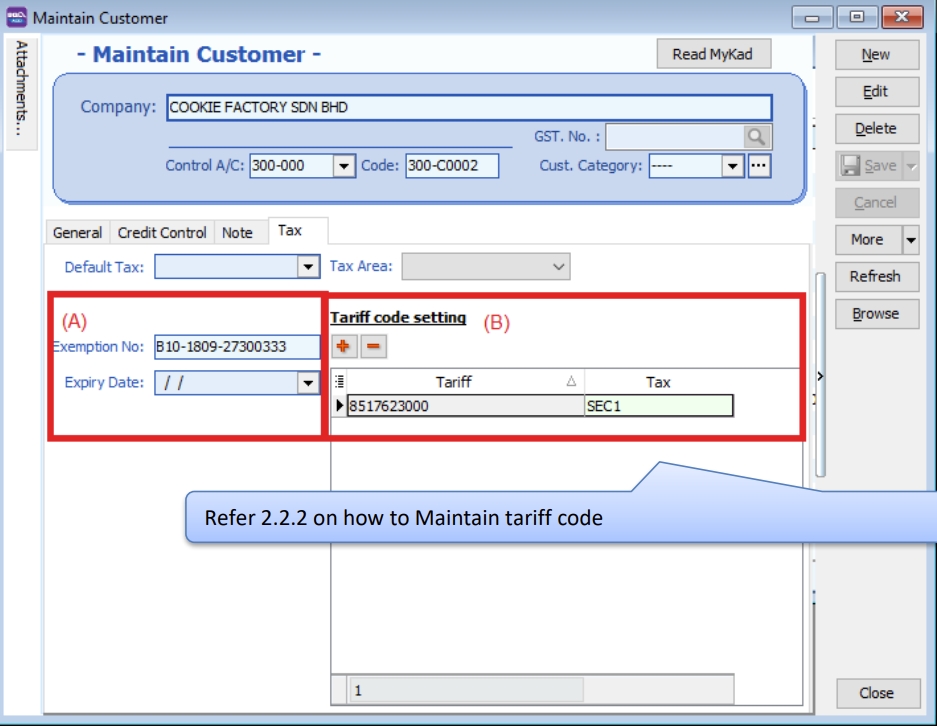

Maintain Supplier

Maintain Supplier is a mirror of Maintain Customer; please refer to Maintain Customer.
Additional features: GIRO (beta version).
Refer to the GIRO module PDF for more information.
Maintain Stock Group
Allows the user to set default account posting for a particular group of items.
Watch tutorial video here: Stock Maintain Stock Item
-
Stock | Maintain Stock Group | New

-
You can enter your code and description. You can also assign your costing method, e.g., FIFO, Weighted Average, or Fixed Cost.
-
Assign the accounts accordingly for sales, cash sales, sales returns, purchases, cash purchases, and purchase returns.
noteIn this case, you can create a different stock group for a different costing method, to apply on a different item code.
Maintain Stock Item
Allows the user to maintain items or services provided by the business.
Watch tutorial video here: Stock Maintain Stock Item
-
Stock | Maintain Stock Item | New

-
You can enter your code and description.
-
You can assign your item to a group (see 2.4 Maintain Stock Group to create a new group)
-
You can set the Base UOM as the default/smallest unit of measurement. Ref Cost and Ref Price are used as the default purchase and sales prices.
-
We group Reorder Level, Reorder Qty, and Lead Time together. These settings allow you to pre-set all details, so if the stock quantity drops to the reorder level a report is generated as a reminder to reorder.
noteReorder Level = When stock balance drops to a certain level, system will be able to prompt you to re-order your stock
Reorder Qty = The quantity you wish to reorder when you print reorder advice report
Lead Time = The number of days required for your stock item to arrive.
Output Tax = Default output tax code for an item (only needs to be defined if different from the system default output tax in Tools | Option | Customer)
Input Tax = Default input tax code for an item (only needs to be defined if different from the system default input tax in Tools | Option | Supplier)
If you pre-set tax codes in both Customer and Stock Item, the system will use the Maintain Customer tax code first, followed by the Stock Item tax code.
-
You can set MIN PRICE, so your sales personnel won’t sell below the minimum price.
-
Multiple UOM is useful for different packaging, as illustrated by the scenario below:
Scenario A:
Suppose you sell blue pens that have different packaging. You can sell by pcs, box, or carton. You can pre-set them like this:

As shown above, there are different Units of Measurement (UOM) and different rates.
noteBase Rate = PCS = 1
Box = 10 PCS
Carton = 24 PCS